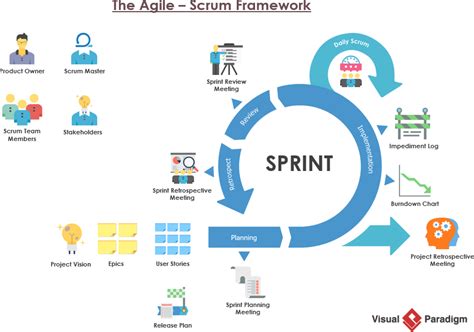If you’re new to Scrum, think of it as a collaborative approach to completing work as a team in small increments. It emphasizes continuous experimentation and feedback, allowing teams to learn and improve over time. Scrum enables teams to deliver value incrementally while providing the structure needed to adapt practices to their specific requirements. You might be wondering, “How do I get started?”
Scrum Framework
Begin by understanding the Scrum framework, as defined in The Scrum Guide. Introduced in 1995, Scrum offers a better way for teams to collaborate and tackle complex problems. The framework is straightforward, consisting of a Scrum Team made up of a Product Owner, a Scrum Master, and Developers, each with distinct responsibilities. The team participates in five events and produces three artifacts. The Scrum Guide, maintained by co-creators Ken Schwaber and Jeff Sutherland, clearly outlines the definitions, accountabilities, events, and artifacts of Scrum.

Why is it called Scrum?
Many people ask if “Scrum” is an acronym, but it’s not. The term is inspired by rugby, where a team forms a scrum to work together and advance the ball. Similarly, Scrum is about teams coming together to move a product forward.
Empirical Process
Scrum operates on an empirical process where decisions are based on observation, experience, and experimentation. It is built on three pillars: transparency, inspection, and adaptation, which support iterative work. Empiricism involves conducting small experiments, learning from them, and adapting both the process and outcomes.
Trust and Values
A crucial characteristic of an effective Scrum Team is trust. Without it, teams may face tension and bottlenecks. Adhering to Scrum Values—Courage, Focus, Commitment, Respect, and Openness—is vital for fostering trust and guiding collaboration, especially in environments where experimentation is key.
Principles and Values of Scrum
In essence, Scrum thrives in an environment where:
- Valuable work is delivered in short cycles (Sprints) lasting one month or less, with ongoing feedback throughout.
- The Scrum Team—comprised of a Scrum Master, Product Owner, and Developers—takes accountability for turning work into valuable increments during Sprints.
- The Scrum Team, along with stakeholders, inspects Sprint results and adjusts for future Sprints.
What is Professional Scrum?
Being effective with Scrum goes beyond merely following its mechanics. Sometimes teams fall into a pattern of going through the motions. Professional Scrum involves a mindset shift and an environment that fosters trust, along with embracing Scrum Values in daily work.
Learn More from the Scrum Community
To deepen your understanding of Scrum, start with The Scrum Guide, the definitive resource. Explore insights from Professional Scrum Trainers (PSTs) and Scrum.org staff on the Scrum.org Blog. The community regularly publishes articles, white papers, videos, webinars, and other materials in the Resources section of our website. If you have questions or want to engage with others, visit the Scrum Forum for additional learning opportunities.
Here’s a rewritten list of references with a consistent format and removed duplicates:
- Visual Paradigm
- Scrum Guide and Tutorials
- What is Scrum
This list provides a more organized structure, making it easier to find specific resources related to Scrum and Visual Paradigm.